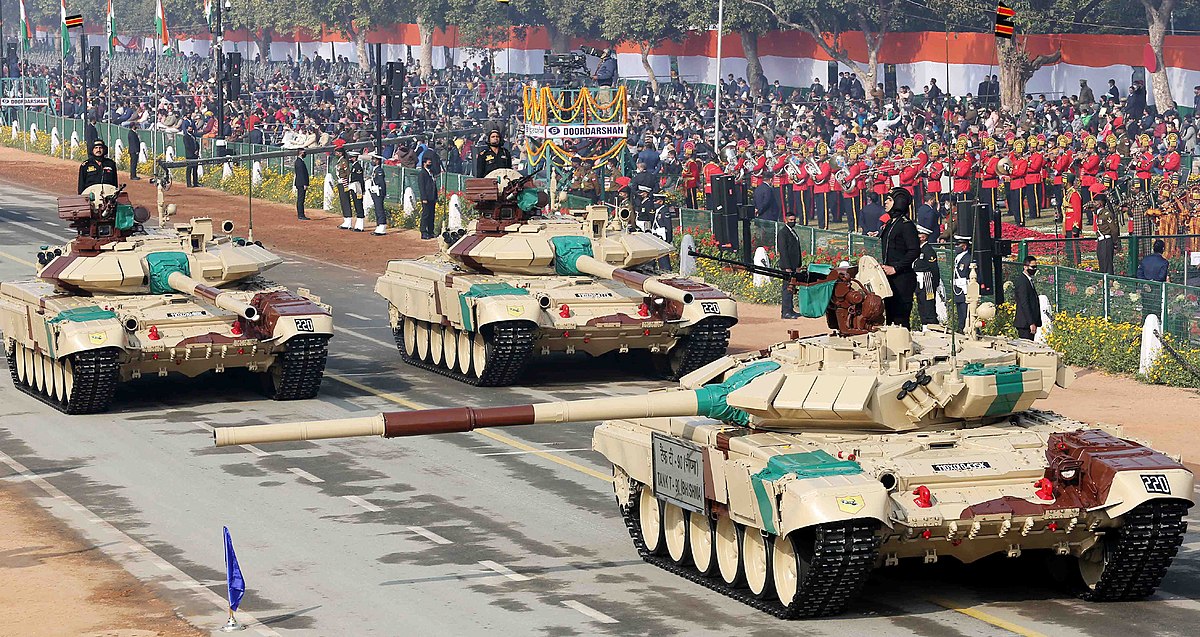At a meeting on November 30, the Defense Acquisition Council (DAC) said that it was necessary to buy and install two types of technology for T-90 tanks. These are the Automatic Target Tracker (ATT) and the Digital Ballistic Computer (DBC). Both are part of the fire control system.
In a nutshell, an AoN is the defense ministry’s approval given at the beginning of the buying process. The Indian Army’s main armored vehicles are the T-90 and T-72 tanks, which were made in Russia.
A very important person in the defense establishment told ThePrint that the Army currently has up to 1,200 T-90 tanks and that another 475 are being built. The source also said that the 1,200 tanks that are already in use will be improved, and the ones that are being built will have an ATT built in.
A source said, “They will help the T-90s get better sight so they can easily spot the enemy tank.” This technology is meant to help the Army.
ATT technology makes it easier to hit moving targets with great accuracy. At the moment, the T-90 tanks have to be placed by hand in order to hit their targets accurately.
“When the target is moving, the tank operator keeps track of it by guessing how long and how fast it will need to get to a certain point before firing the round,” the source said, adding that this makes it more likely that the bullet will miss the target.
The DBC, which is part of the fire guidance system, figures out the round’s path by looking at the weather. The temperature outside, the temperature inside the tank, and the wind conditions (like speed and direction) can all change the performance of a round of ammunition. All of these things are used by the DBC to make calculations that help it hit its target perfectly.
Sources say that the computer that is currently in the tanks is analog, and systems are being digitized to get rid of the chance of human error and bias.
Along with the T-90s, the Army also has about 2,400 T-72 tanks that do not have the ATT and DBC.
The Army is also buying 1,700 Future Ready Combat Vehicles (FRCV), which will slowly take the place of T-72 tanks. The FRCVs will have Battlefield Management System (BMS) built in.
The source said this will help in battle by giving the tank commander a better picture of what’s going on by marking the locations of enemy tanks and other information, like how much ammunition they have left, which will help them plan better.
Tanks under debate
India is spending a lot of money to build, buy, and fix up tanks at a time when their use on battlefields is being debated, especially after the war between Russia and Ukraine.
Reports say that the Army has put out a call for help with its plan to restore and extend the lives of T-72 tanks that are already in use. Aside from that, the Ministry of Defence asked the Heavy Vehicles Factory in Chennai to send 118 Main Battle Tanks (MBTs) Arjun Mk-1A in 2021. The prototype of the Zorawar Light Tank, which is made in Zorawar, should also be ready by the end of December.
Some global strategic experts say that tanks are becoming obsolete, while others say that tanks are here to stay and that the battle between tanks and anti-tank systems has been going on for a long time.
But experts in India think tanks will be around for at least a little while longer.
Major General B.S. Dhanoa (retd) told ThePrint that the tank’s main purpose hasn’t changed since World War II.
He said, “What has become clear is the threat that new technologies pose to the behemoths of land power.” These include a new generation of anti-tank guided missiles, unmanned aerial systems carrying a wide range of detection and kinetic anti-tank weapons, and electronic warfare suites that can attack a tank’s own electronic systems.
He also said that the tank was still a sign of national pride and a threat, and that it would still play an important role in combined arms warfare because of its mobility, firepower, and protection.
When used for offense, a tank provides mobile and protected lethality on the battlefield to help the ground forces move. One tank fights another tank at a range of one to two kilometers on the defense. The retired officer said that tanks are still an important part of combined-arms warfare on the ground. Without them, other weapons are more likely to be attacked.
“Infantry is weak when trying to take defensive positions, so tanks are still very important during offensive operations.” “Anti-tank guided missiles can’t take the place of tanks when it comes to supporting maneuvers,” Maj Gen Dhanoa said.
